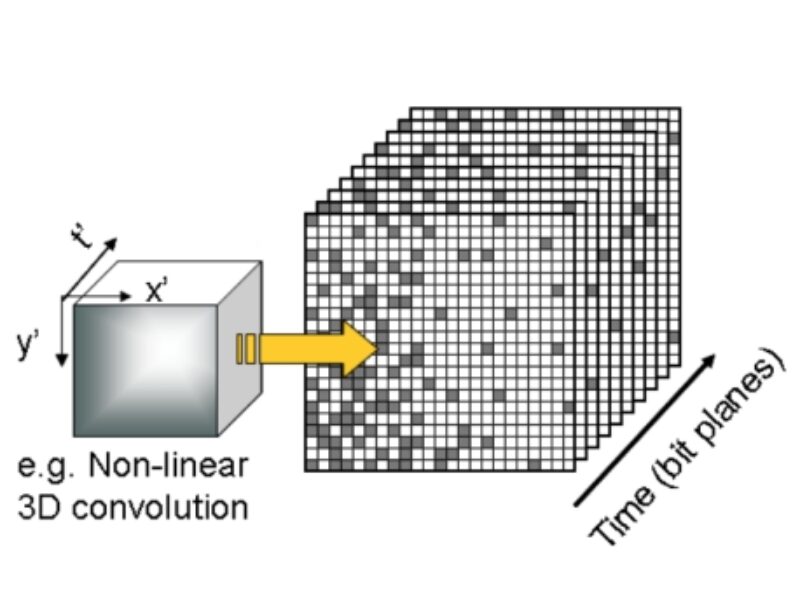
Professor Eric Fossum – the engineer and physicist who invented the now ubiquitous CMOS image sensor – and Thayer PhD candidate Jiaju Ma have been working together for the last three years on developing pixels for a new image sensor said to be able to significantly enhance low-light sensitivity. The new sensor – called the Quanta Image Sensor (QIS) – could offer especially significant benefits in applications such as security, astronomy, and life science imaging, where only a few photons are typically available for detection.
"Light consists of photons, little bullets of light that activate our neurons and make us see light,” says Fossum. “The photons go into the semiconductor [the sensor chip] and break the chemical bonds between silicon atoms and, when they break the bond, an electron is released. Almost every photon that comes in makes one electron free inside the silicon crystal. The brighter the light, the more electrons are released."
A key challenge in designing the QIS, says Fossum, is counting how many electrons are set free by photons and thus being able to effectively count photons. This is critical in very low-light applications from life science microscopy and photography, and, he says, even possibly in quantum cryptography and the Internet of Things.
"When we build an image sensor, we build a chip that is also sensitive to these photons. We were able to build a new kind of pixel with a sensitivity so high we could see one electron above all the background noise."
The pixels on the new sensor are much smaller than pixels found on traditional sensors since they need to be able to detect single photons. However, there are many more of them in order to capture the same number of photons. "We’d like to have one billion pixels on the sensor and we’ll still keep the sensor the same size," says co-researcher Ma.
The new pixels are, say the researchers, by design the first to be able to sense and count a single electron without resorting to extreme measures. As a result, they are compatible with current CMOS image sensor technology and offer the potential for easy industry adoption.
"The question was how to build this in a current, commercially accessible, not-too-expensive CMOS process." says Fossum. “You use all the tricks you can think of. Being able to measure one electron is fundamental from a scientific point of view and we were able to do it without a ‘Manhattan Project.’"
For more, see the paper published in the journal IEEE Electron Devices: "Quanta Image Sensor Jot With Sub 0.3e."
Related articles:
Wearable cameras is next boom market for image sensors
Self-powered image sensor could charge smartphone
Sub-5nm fab to manufacture quantum dot camera sensors
 If you enjoyed this article, you will like the following ones: don't miss them by subscribing to :
eeNews on Google News
If you enjoyed this article, you will like the following ones: don't miss them by subscribing to :
eeNews on Google News
